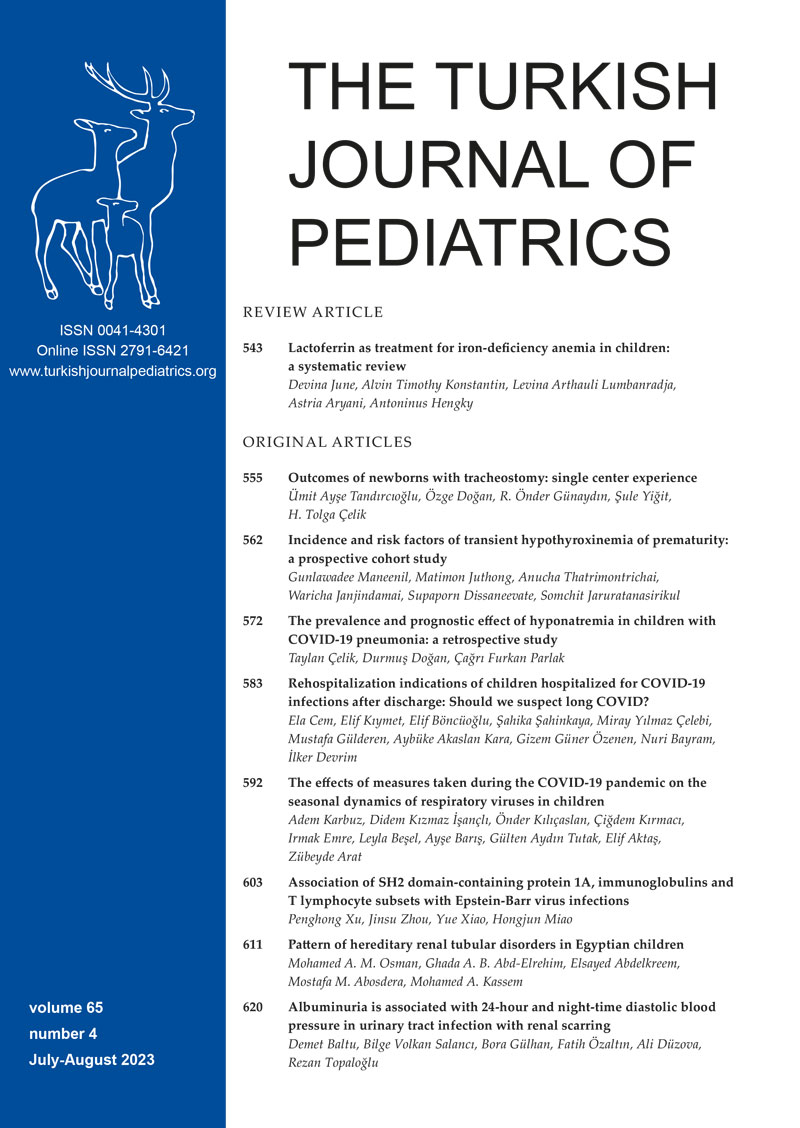Abstract
Background. We aimed to analyze the levels and associations of SH2 domain-containing protein 1A (SH2D1A), immunoglobulins and T lymphocyte (TL) subsets in children with Epstein-Barr virus (EBV) infections.
Methods. Sixty children with EBV infections admitted from January 2019 to January 2022 were selected, including 29 cases of infectious mononucleosis (IM group) and 31 cases of chronic active EBV infections (CAEBV group). Another 42 healthy children undergoing physical examination in the same period were selected as a control group. Their changes in SH2D1A, immunoglobulins and TL subsets (CD3+, CD4+ and CD8+) were compared.
Results. The levels of CD3+, CD4+ and CD8+ in the IM group were higher than those of the control group (P < 0.05), while they were lower in the CAEBV group than those of the control and IM groups (P < 0.05). The levels of SH2D1A, signaling lymphocyte activation molecule (SLAM) and SLAM-associated protein (SAP) were significantly higher in the IM group than those in the control and CAEBV groups (P < 0.05). The CAEBV group had decreased protein expressions of SLAM and SAP compared with those of the IM group. SH2D1A was positively correlated with immunoglobulin A, immunoglobulin G and TL subsets (CD3+, CD4+ and CD8+) (P < 0.05).
Conclusions. Detecting SH2D1A, immunoglobulins and TLs contributes to the diagnosis and differentiation of IM and CAEBV.
Keywords: Epstein-Barr virus, SH2 domain-containing protein 1A, SLAM-associated protein, T lymphocyte subsets, clinical diagnosis, immunoglobulins, signaling lymphocyte activation molecule
Copyright and license
Copyright © 2023 The Author(s). This is an open access article distributed under the Creative Commons Attribution License (CC BY), which permits unrestricted use, distribution, and reproduction in any medium or format, provided the original work is properly cited.














